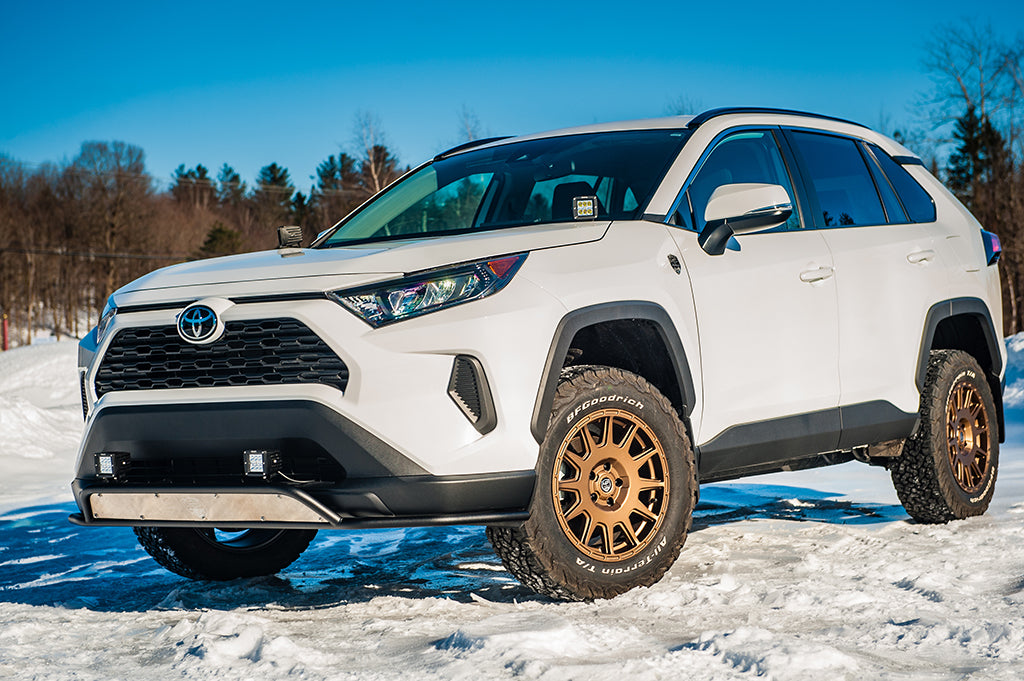Are Wider Tires Better? Here’s What You Should Know about Wider Tires
March 8, 2020
Do you know narrow or wide tires can affect not only the car’s appearance but also its performance? Here we will answer the ultimate question: Are wider tires better?
Recently, many car owners prefer wide tires to narrow ones as they believe wider tires means better tires in various aspects. It’s been becoming a trend in the automobile industry.
While some think large size tires improve the driving experience, others love it for better appearance. Are wider tires better overall like that? Let us take you to some advantages and disadvantages of upsizing your tires.
Advantages
1. Better grip and traction
Basically, you can achieve better traction by doing one of these two actions: having more pressure per square inch or wider contact area with the road. In this way, wider tires offer better grip and traction as they definitely bring you a broader contact area.
However, you should also know that increasing the contact area causes a lower force onto the surface and vice versa. There’s no way you can have both options at the same time. Thus, it means that skinny narrow tires can also provide better traction because it generates more pressure per square inch.
In this category, each type of tires will have its own advantages. Consequently, get the tire that fits most to the type of roads you’ll be driving on and other driving conditions.
2. Improved Cornering
The same aspect of having a wider contact area with the road with the above, wider tires offer better cornering and road handling. It is also because wider tires have a better thread and stiffer sidewalls that they have less vehicle roll in corners.
3. Better Braking
Upsizing your tires will bring your vehicle better contact area and grip while it’s running on the road. Thus, this action reduces the braking distance, especially on dry pavements, giving your vehicle a better braking system.
4. Better Appearance
Another perk of upsizing your tires is that it will give your vehicle a more sporty look. Hence, the overall design gets enhanced. Nowadays, many car owners love wider tires as it surely offers a boost to the car’s appearance.
So, are wider tires better really? In fact, everything comes with its own pros and cons, so do wider tires. Here are some downsides of wide tires that you should consider before getting your vehicle upsized.
Disadvantages
1. Increased Fuel Consumption
Generally, the less friction your car produces the less steering effort needed, thus, less fuel consumed. On the contrary, wider tires increase fuel consumption as it generates more friction.
Moreover, wider and bigger tires are obviously heavier, which will require the engine to work more. As a result, they surely consume more fuel.
In this aspect, narrow tires will be a better option as they reduce fuel consumption by generating dramatically less friction.
2. Slower Acceleration and Harder Steering
Wider tires are heavier, which, as a consequence, adds more weight to the car. This decreases the car’s acceleration. With its large contact area, wide tires not only slow down acceleration but also cause hard steering and poor car handling.
On the other hand, the vehicle with wider tires take more time to steer, or return to the center, after every sharp turn. Experiencing harder steering is another downside of using wider tires.
3. Quick Tire Wear
With all those above-mentioned drawbacks, larger tires surely will wear out faster than narrow ones. For instance, wider tires will put more strain on the brake, causing your braking system to work harder. Thus, it wears out faster, which forcing car owners’ to replace them more often.
4. Speedometer Error
By upsizing your tires, you are changing your car standard components. Thus, a car’s embedded technology can be a bit off in terms of accuracy, resulting in errors with the speedometer reading.
5. Safety System Warning
Together with the speedometer reading, other electronic safety aids in the vehicle like EBD, ABS or traction controller might also be affected with their accuracy and timely notifications.
6. Costly
Large tires, obviously, will cost more to make. Thus, it costs more to be installed. Wider tires are also more expensive, comparing to narrow tires because there are fewer options available on the market.
Frequently Asked Questions
1. Question: Which size will a tire be considered wide?
Answer: A wide tire is any tire that is larger than the specification’s original width for your vehicle.
2. Question: What is upsizing tires?
Answer: The basic action of plus sizing or upsizing your tire is replacing your stock wheel size with one that has a larger diameter, and still keep the same combined/overall diameter of the original tire and wheel.
3. Question: Are wider tires better driving in snowy weather?
Answer: Unfortunately, the answer is NO. With snow on the road, it is more important to have more pressure applied than having a bigger contact area. In this way, narrow tires are better an option as they can cut through the snow and provide better traction.
4. Question: In which weather are wider tires better?
Answer: Except for snow driving, wider tires are generally better in most cases, either wet or dry road conditions.
With bigger sipes, wider tires can trap and remove water better from the road, or any contact surface. Unless you need to drive over a shallow lake, wider tires are better and more practical to drive on rainy days.
On the other hand, go wide is always the most recommended option for dry road driving. On this type of road condition where having more pressure on the road isn’t an essential factor, the bigger the contact area, the better.
Final words
Making the right changes for your tires and wheels to a wider or narrower model from its stock size can be confusing sometimes. However, in the end, it all comes down to your desires. What do you want to achieve? Whether it is for better appearance or better performance, knowing your needs and conditions to have the better and right change for tire and your vehicle in general.
Are Wider Tires Better? Here’s What You Should Know about Wider Tires - Tire Deets














